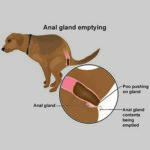Do Dogs Have Growing Pains
Do Dogs Have Growing Pains? The Truth About Canine Development
If you’ve ever raised a puppy, you know that they can be both adorable and annoying, with their cute faces and sharp teeth. However, you may also have noticed that your furry friend sometimes limps or whines, especially after exercise or play. Are these signs of growing pains in dogs, or something else? In this article, we will explore the topic of canine development and answer the question: Do dogs have growing pains?
First of all, let’s define what growing pains are. According to medical sources, growing pains are a common condition in children, characterized by recurrent episodes of moderate to severe pain in the legs (usually the calves) during the night or after physical activity. Growing pains are not caused by actual growth but by muscle fatigue or strain on the bones and joints due to rapid changes in size and weight. Growing pains usually go away by themselves as children reach adulthood.
Now, does this mean that dogs can also experience growing pains? Well, there is no clear evidence that dogs have the exact same type of pain as human children do. However, there are some similarities between the two species when it comes to bone and joint development. Like humans, dogs go through different stages of growth depending on their breed and size. Generally speaking, small breeds mature faster than large breeds, reaching their adult size within 6-12 months (or even earlier), while large breeds may take up to 2 years or more to fully develop.
During this time, puppies may experience some discomfort and stiffness in their limbs due to the stretching of muscles and tendons around their bones. This is normal and usually temporary. However, if your dog shows signs of persistent lameness, swelling or tenderness in specific areas of its body (such as hips, knees or elbows), it could be a sign of a more serious condition such as dysplasia, arthritis or injury. In such cases, you should consult a veterinarian for proper diagnosis and treatment.
In addition to physical factors, there are also emotional and behavioral aspects of canine development that may affect your dog’s well-being. For example, puppies need socialization and training to become well-adjusted adult dogs. They may experience separation anxiety, fear, aggression or other issues if they are not properly socialized and trained. Therefore, it is important to provide your puppy with positive interactions with humans and other animals, as well as appropriate discipline and rewards.
Now that we have discussed the basics of canine growth and development, let’s address some common myths and misconceptions about growing pains in dogs:
– Myth #1: Dogs grow out of their pain.
Fact: While some puppies may outgrow their temporary discomfort as they mature, others may develop chronic conditions that require medical attention. Ignoring your dog’s signs of pain can lead to further damage or complications down the road.
– Myth #2: Giving your dog supplements or medication can cure growing pains.
Fact: There is no magic pill or potion that can prevent or treat all types of pain in dogs. Some supplements or medications may help alleviate symptoms temporarily, but they do not address the underlying cause of the pain. Moreover, some substances can be harmful to dogs if given in wrong doses or combinations.
– Myth #3: Playing with your dog too much causes growing pains.
Fact: While overexertion can lead to muscle strain or fatigue in dogs (just like in humans), playing with your dog is generally a good thing for its physical and mental health. You should monitor your dog’s playtime and adjust it according to its age, size and breed. If your dog shows signs of exhaustion or discomfort during play, you should stop and rest.
So, what can you do to help your puppy grow up healthy and happy? Here are some tips:
– Feed your dog a balanced diet that meets its nutritional needs.
– Exercise your dog regularly but gradually, following its abilities and limitations.
– Give your dog plenty of rest and sleep in a comfortable and safe environment.
– Train your dog using positive reinforcement techniques that promote good behavior.
– Socialize your dog with people and other dogs in a controlled and positive manner.
– Take your dog to regular check-ups with a veterinarian who knows its breed and age.
In conclusion, while the concept of growing pains may not apply directly to dogs, there are still many factors that affect their physical, emotional and behavioral development. As a responsible pet owner, you should be aware of these factors and take steps to ensure that your puppy grows up into a healthy and happy adult dog. By doing so, you can enjoy many years of companionship, loyalty and love from your furry friend. After all, isn’t that what having a dog is all about?



